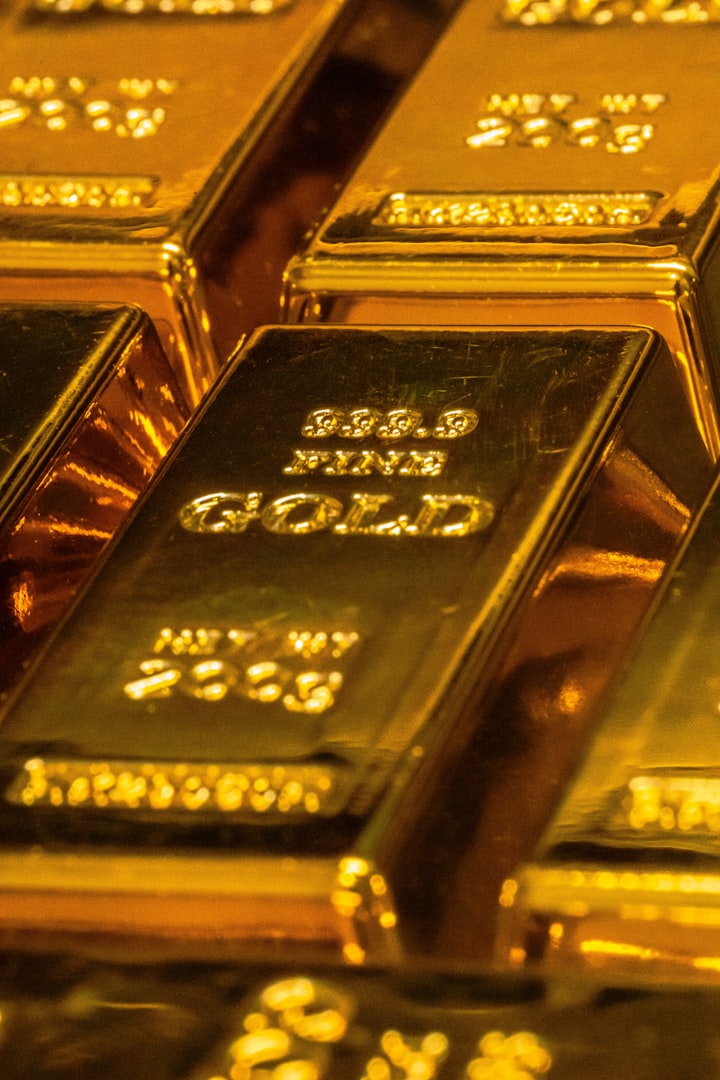
Investors can invest in gold via Exchange Traded Funds (ETFs) and buy shares from gold miners and affiliates or buy physical products. Key takeaways Goldbugs encourage investors to own precious metals as part of a diversified long-term investment portfolio. Investors have many reasons to invest in gold, and they have ways to do so.
Many investors try to buy gold in times of market uncertainty. Gold is often seen as a hedge against inflation and the preservation of value by being thick and thin.
In a way, gold is a great place to invest because it can be used as a hedge against the stumbling stock market and ownership of a physical asset like gold seems more attractive than the stock market. Gold mining stocks invest in companies that search for gold, and these stocks follow the price of gold. Nevertheless, these shares are subject to fluctuations in the business itself and if the business is poorly managed, the country is in turmoil, mining is not successful or workers are on strike your investments will suffer.
Physical gold is a much more stable investment if you own, store or own an IRA or certified account yourself. Gold stocks work like any other stock by investing in a company that mines and owns gold on your behalf.
When you invest in gold, when you buy it in form of gold bars or coins, you invest in bullion. On the other hand, if you invest in stocks, you buy gold just like anyone else.
Because gold stocks are directly linked to the price of physical gold, they are more vulnerable to other types of risk than the broader stock market. An exchange-traded gold instrument that holds physical gold may be beneficial to investors, but it also carries the risks inherent in the precious metal itself.
For example, the most popular gold ETF, GLD, has been criticized for its complex structure compared to mortgage-backed securities. Some gold ETFs focus on holding physical gold and protecting investors from rising prices with their fees. Because of the focus on ETFs, it can be risky to invest in gold mining stocks if they undercut the price of gold due to capital and operating costs, management errors, or other difficulties.
Gold investors can buy shares in a gold-focused exchange-traded fund (ETF) that holds physical gold or mining companies' shares. You can also add another level of diversification by buying gold, silver, or platinum mining stocks. In addition, gold mining stocks have many advantages over buying physical metals.
Consider the gold market to understand their investment differences. Gold stocks are more attractive to growth investors than income investors. They rise and fall with the price of gold, and well-managed mining companies are more profitable with more expensive gold.
Also known as 'paper gold' trading strategies have a similar function to other stocks you buy: you invest in a company and hope that it will be successful so that your investment is made up. With gold equities, you invest in companies tied to gold, so your investment mimics the price of gold, not the stock market. However, not all gold stocks manage to match, let alone surpass, the price and performance of gold.
Unlike buying individual shares, buying shares in gold mining companies carries some risk but it also means you have complete control over the company in which you invest. For example, an investor may choose a gold mining company that has a strong environmental responsibility, or one that does not. While owning shares do not allow you to hold gold in your hands, it does mean you can benefit from an asset that you can sell at any time.
Investing in gold securities is comparable to investing in other securities, except that prices move more slowly than the stock market. You can buy gold coins from banks, dealers, brokerage companies, or the US Mint, which has since 1986 been producing gold coins and bullion for investment. Gold coins or bars are sold at a premium and can be bought at a discount, so if you don't like the market price, you have to sell.
You can buy shares, gold mining companies, gold futures contracts, gold-focused exchange-traded funds (ETFs), and other regular financial instruments. When investors buy gold-backed ETFs, they buy shares in a trust that owns gold and claims to own physical gold itself.
As with any investment, financial assets such as gold are subject to supply and demand pressures that can lead to price fluctuations. Here are some important distinctions that determine the difference between gold stocks and physical gold.
While physical gold is a better hedge than gold mining stocks, the reaction you get when the gold price is clear and decisive is to invest in physical gold. When inflation takes a hit and the stock market heads for new records, the price of physical gold has no iron rule about what tends to go up. As with physical gold and other direct gold investments, physical gold tends to fall by the wayside when the stock market improves.
Looking at a long time horizon, the Dow Jones Industrial Average has been a good reflection of the entire stock market over the past 30 years, consistently outperforming gold.
It is an exciting way to invest in gold, but it can be difficult to buy, store and sell gold. Like the stock market, it has its ups and downs, and investing in physical gold comes with a lot of unexpected costs and considerations, including insurance and safe storage.
Now that you know a little about precious metal investments, we are ready to discuss how precious metal investments should be valued compared to traditional investments on the stock market. Many visitors to our website are familiar with traditional investment tools such as stocks, but perhaps not as familiar with gold and silver.
The main difference between the two asset classes is that shares are classified as shares, which means that shareholders own part of the company that issued the shares, while precious metals are classified as commodities, which means that the metal owner owns a specific physical product. Exchange-traded funds (ETFs), Exchange Traded Notes (ETNs), and Closed-End Funds (CEFs) trade on gold exchanges, which trade shares on major exchanges.
As of November 2010, SPDR Gold Shares is the world's largest exchange-traded fund by market cap. The first gold ETF was gold bullion security with the ticker symbol "Gold" which was introduced on the Australian Stock Exchange in March 2003 and represented 0.1 ounces (3.1 g) of gold.
About the Creator
Son Sim
Love writing poems, fiction stories and a lot more





Comments
There are no comments for this story
Be the first to respond and start the conversation.